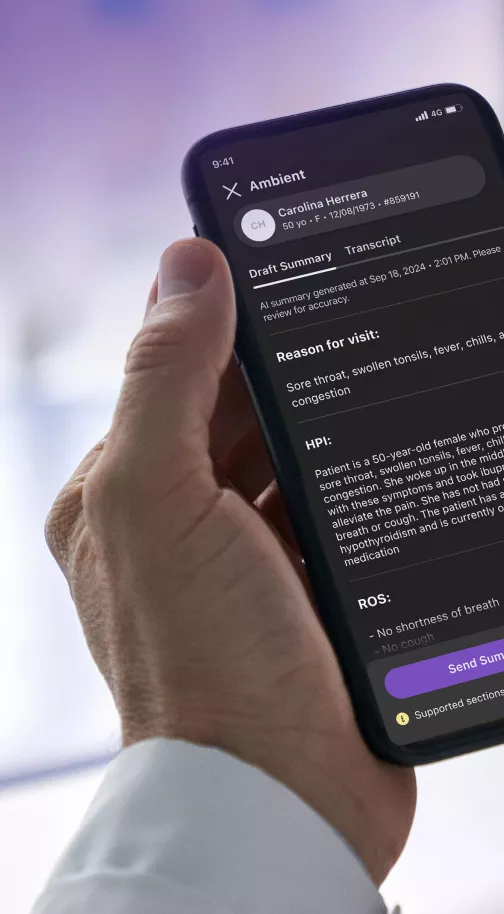As the wellness visit ready for a makeover? New Medicare reimbursement rules — and an increased focus on risk-based contracts — are steering more patients to annual physicals. Still, the quintessential doctor's visit doesn't always live up to its potential.
Only a modest 15 percent of Medicare patients come in for wellness exams. Many doctors complain that demand to fill payer-required tabs on a chart invades an already jam-packed visit, leaving scant time for patient concerns. Patients and doctors alike complain that the visits can be unhelpful — even wasteful.
But some organizations are finding ways to reshape the wellness visit into something both patients and providers find productive. When researchers interviewed top performers on key financial and clinical metrics across the athenahealth network, they found some common strategies for making wellness visits work.
1. Focus on charts ahead of time
When lab results are missing or screenings are outstanding, the annual wellness visit can quickly become unproductive. So high performers adapt their staff workflows to prepare charts in advance of the physician's time with the patient.
At Beebe Medical Group in Delaware, that work happens a week ahead of the visit. Staff review the patient chart, hunt down any missing lab results, and call the patient when necessary to fill in any details. And if the patient hasn't received that recommended test or screening, or lab results are delayed, Beebe staff will reschedule the appointment.
Likewise, Valley Medical Group in Massachusetts ensures that delayed mammograms, colorectal cancer screenings, and other tests are addressed before the patient is in front of the physician. The team-based workflow the organization has adopted — the Proactive Office Encounter Team (POET) — also leaves patients with written care summaries that prompt them to schedule follow-up tests before the next visit arrives.
2. Engage medical assistants
Some studies find that wellness visits are more likely in organizations where workflows and non-physician clinical staff are dedicated to completing and documenting quality data. Indeed, many of athenahealth's top performers have workflows in place to enable medical assistants and alleviate the quality reporting burden on physicians.
At South Nassau Primary Medical Care in New York, medical assistants are trained to take the patient through the quality management questions during intake and assist physicians with documentation, says Elizabeth Durante, the organization's administrative director of physician integration.
South Nassau's quality adherence is so thorough that many medical assistants are cross-trained to understand different physicians' preferences, to allow for flexibility.
Non-physician staff is also critical to the visit workflow at Colorado-based DTC Family Health and Walk-In, another top quality performer on the athenahealth network.
“Some things are too important to be left to physicians," says one of DTC Family's founding physicians Lynn Joffe, M.D. “And for the primary care folks, at least, the move from volume to value depends on this. Your future reimbursement depends on your ability to show that your metrics are good."
3. Keep patients connected
Patients often need time to digest a care plan, so questions often come up after they leave. Instead of leaving patients unsure of where to turn for a year, or scheduling another appointment, high performers have learned that increasing accessibility not only improves patient outcomes, but facilitates value-based care and patient engagement.
At DTC Family, the patient portal has been an essential part of the care continuum and case management strategy. A triage protocol ensures that the right care team member answers patients' questions promptly. And that quick response makes the portal highly interactive and encourages patients to be proactive members of their own care team.
That tactic reduces the number of unnecessary appointments between wellness visits, and has helped DTC Family succeed in value-based contracts.
4. Preserve the conversation
To make sure that quality metrics are met and patients aren't left with lingering concerns, CharterCARE Health Partners in Rhode Island, another top performer, has extended wellness visits to 45 minutes. Those longer visits help physicians address patients' lifestyle habits before they become bigger problems.
Indeed, many top performers aim to use the wellness visit as less of a series of check boxes and more of an opportunity for counseling. The time saved from streamlining documentation allows for patients to discuss issues that a quality metric might not capture.
The true goal of value-based care should be for providers to shift away from thinking about the quality metrics, so they can "focus on the patient and the behavioral changes that need to be made," says Joffe of DTC Family.
"What we're being told we need to do is cookbook," she says. "But the joy of medicine is in the interaction."
Qualitative performance research conducted by David Clain and Erica Granor. Follow Chelsea Rice on Twitter @ChelseaRice.












